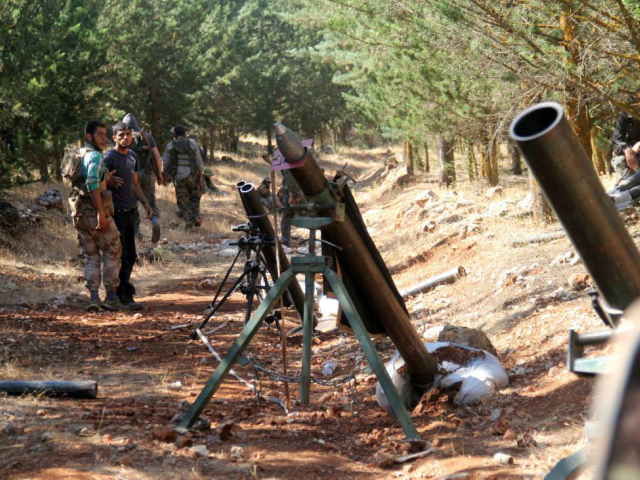The monitor group Conflict Armament Research (CAR) has issued a report based on three years of documentation that shows weapons procured by the U.S. military in 2015 fell into the hands of the Islamic State (ISIS/ISIL) within weeks.
The weapons were discovered in the terrorist group’s arsenals and on the battlefield, according to NBC.
NBC reported that researchers identified weapons supplied by other geopolitical players, as well:
CAR used serial numbers or key markings on the weapons to trace them back to their origin and try to piece together how they were obtained by the militants.
Some of the weapons found on the front lines after ISIS was driven out also include Chinese-manufactured machine guns laced with amphetamines, drones modified in sophisticated terrorist factories and even a rifle made in Nazi Germany. CAR found that one anti-tank missile sold to the U.S. Army made its way to ISIS in just 59 days.
“This is extremely short,” Damien Spleeters, a CAR researcher focused on Iraq and Syria, told NBC News in Iraq, referring to the amount of time between the arrival of the weapons and their discovery in enemy hands. “It means that there are not many intermediaries in this chain of custody.”
The U.S. supplied the weapons to two different groups; one fighting the Assad regime in Syria and another to the rebel group the Syrian Democratic Forces.
CAR also reported at some of the weapons could have been stolen or purchased illegally.
NBC reported that there is photographic evidence showing a Syrian opposition group called Jaysh al-Nasr in possession of anti-tank weapons bearing an identical lot number and a similar serial number to the item seized in Iraq.
That suggests, CAR states in the report, that they “were part of the same supply chain.”
NBC asked Eric Pahon, a spokesman for the Department of Defense, about the CAR report.
“Any alleged misuse or diversion of U.S. support will be taken seriously and lead to the possible curtailment of support, if verified,” Pahon said, adding that he had not seen the report.
Charles Lister, a senior fellow at the Middle East Institute in Washington, D.C., called Jaysh al Nasr “one of the most significant groups” receiving weaponry support according to NBC.
NBC reported:
The weapons recovered from ISIS and documented in the report come from a wide range of manufacturers and sources. Many were looted from Iraqi and Syrian government stockpiles as ISIS rampaged across both countries. By early 2015, the group controlled around 35,000 square miles of territory—an area about the size of Indiana. But CAR says the introduction of new weapons into the Syrian conflict significantly improved the “quantity and quality of weapons available” to ISIS.
Breitbart News reported in May that the U.S. Army had lost track of more than $1 billion worth of weapons and other equipment sent to anti-Islamic State (ISIS/ISIL) allies in Iraq, including an Iran-allied group of Shiite fighters.
According to a declassified government audit of the Iraqi Train and Equip Fund, hundreds of Humvees and mortars and tens of thousands of rifles remain unaccounted for largely because a central database for keeping track of U.S. taxpayer-funded military equipment does not exist.
“This audit provides a worrying insight into the U.S. Army’s flawed—and potentially dangerous—system for controlling millions of dollars’ worth of arms transfers to a hugely volatile region,” Patrick Wilcken, an arms control and human rights researcher for Amnesty International, which procured the release of the government audit, said in a statement.
“It makes for especially sobering reading given the long history of leakage of U.S. arms to multiple armed groups committing atrocities in Iraq, including the armed group calling itself the Islamic State,” Wilcken said. “The need for post-delivery checks is vital. Any fragilities along the transfer chain greatly increase the risks of weapons going astray in a region where armed groups had wrought havoc and caused immense human suffering.”

COMMENTS
Please let us know if you're having issues with commenting.